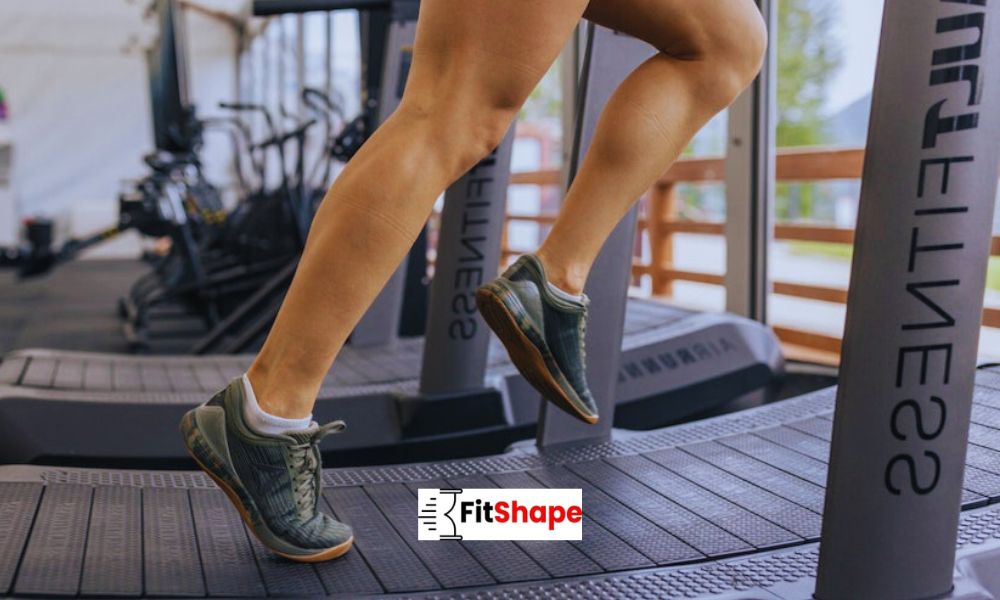Running is a popular form of exercise that has numerous health benefits. However, running outdoors isn’t always an option, especially when the weather does not permit or when access to trails and parks is limited.
For these reasons, many people consider treadmill training as an alternative to long-distance running. This article will explore why long-distance treadmill training should be considered and provide information on how to build endurance on a treadmill as well as long-distance workouts to try.
Treadmills are often used as a substitute for outdoor running due to their convenience and availability regardless of the climate or terrain conditions outside. The ability of treadmills to simulate outdoor courses makes them ideal for preparing athletes for races.
Treadmill workouts also allow users to focus on specific goals such as speed work or tempo runs without being hindered by external factors such as hills or wind resistance. Furthermore, they provide valuable feedback in the form of time splits, calories burned, distance travelled, and heart rate which can help runners track their progress over time.
Why Consider Long-Distance Treadmill Training
Long-distance treadmill training offers numerous benefits, including the ability to prepare for outdoor running in a controlled environment. Not only does it offer an opportunity to build endurance by controlling speed and monitoring progress, but also provides a secure place to practice interval training and warm-up strategies.
It can also help with mental motivation by creating an environment that simulates race conditions while allowing the runner to control their pace. Furthermore, using a treadmill allows for precision when measuring and tracking progress which can be beneficial for especially long distances.
With all of these advantages combined, long-distance treadmill training can be an invaluable tool in powering through races or improving overall performance. Transitioning from this discussion into how one might build endurance on a treadmill is essential as understanding proper techniques is key to maximising the effectiveness of each workout session.

How to Build Endurance on a Treadmill
Building endurance on a treadmill requires setting the right pace, being aware of the importance of hydration and nutrition, and making adjustments as needed. Finding an appropriate pace means not pushing too hard and allowing for rest periods to prevent burnout.
It is imperative to drink water before, during, and after a training session in order to stay hydrated. You should also fuel your body with nutritious food prior to a workout in order to have enough energy for the duration of the training.
Setting the Right Pace
Maintaining the correct speed is essential to successful long-distance training indoors. Interval sprints, when combined with proper form and mental focus, can help build endurance on a treadmill. Rest intervals should also be incorporated to allow the heart rate to return to normal before beginning another sprint.
It is important to remain mindful of one’s physical capabilities and adjust the pace accordingly in order to avoid injury. Ensuring that each workout session provides enough challenge without overstressing the body will yield greater gains in endurance. To ensure this, setting achievable goals and slowly increasing intensity levels over time are helpful tools for improving performance.
Having knowledge of proper hydration and nutrition is equally as critical for long-distance training indoors as maintaining the correct speed. Hydrating adequately during exercise is necessary for replenishing fluids lost through sweat while eating nutritious food helps provide energy needed for running on a treadmill or other indoor exercise equipment.
In order to maximise these benefits, understanding individual needs related to hydration and nutrition should be taken into consideration when developing an indoor workout plan. Therefore, proper hydration and nutrition are key components of successful long-distance training indoors that require careful planning in order to achieve optimal results.
The Importance of Hydration and Nutrition
Effective hydration and nutrition are essential elements of successful long-distance training indoors. Proper diet tracking can help to ensure that runners get the right nutrients they need to fuel their bodies throughout a workout. Calculating electrolytes is important as well, as it helps regulate hydration levels during and after running.
starting a treadmill session, runners should make sure they are properly fueled by consuming pre-run snacks or meals that contain carbohydrates and proteins for energy. During interval training, drinking water at regular intervals is key in order to stay hydrated while also avoiding cramps, fatigue, and other common issues associated with dehydration.
Following each run, it is important to take time to stretch and consume post-run snacks or meals that include carbohydrates for recovery purposes. Taking these steps into consideration will enable runners to ensure their bodies have the proper amount of fuel needed in order for them to succeed on their long-distance indoor runs.
To transition into the next section about ‘long-distance treadmill workouts to try’, it is important for runners to understand what types of workouts will provide them with maximum benefits based on their individual goals.

Long-Distance Treadmill Workouts to Try
Long-distance treadmill workouts can be an effective way to build endurance and strength. Altering the incline of the treadmill to simulate a real-world experience is recommended for these types of workouts, and recovery tips such as proper hydration and stretching post-run can help reduce soreness. Taking breaks during the run may also be beneficial in order to avoid overtraining.
Altering Incline for a Realistic Experience
The inclination of a treadmill can be adjusted to simulate the terrain of outdoor running, creating an immersive experience for the user. This helps make long-distance training indoors more realistic and enjoyable. To get the most out of a long-distance running session on a treadmill:
- Varying intensity can be achieved by setting different inclines throughout the workout.
- Interval sprints can be added at lower speeds with proper form, which is beneficial for building strength and endurance.
- Mental focus should also be kept in check while running on an inclined surface for extended periods of time.
- Proper form should always be maintained when changing incline settings to avoid injury or discomfort during the run.
Incorporating the following post-run recovery tips is key to maintaining healthy habits so read along to reach your fitness goals in no time!

Post-Run Recovery Tips
After a long-distance run, it is important to focus on post-run recovery strategies in order to optimise performance for future workouts. Cooling down is an essential part of the recovery process and involves slowing down the pace gradually until one has returned to their resting heart rate.
This helps prevent dizziness and lightheadedness that can occur after strenuous activity. Injury prevention is also a major factor in post-run recovery; stretching techniques should be incorporated both before and after running in order to reduce soreness and maintain flexibility. Foam rolling or massage can help with muscle regeneration by improving circulation and decreasing inflammation.
Mental preparation also plays an important role in post-run recovery; this includes taking time for self-reflection, setting goals for subsequent runs, or simply relaxing with music or a book. It is very important to remember that rest days are just as crucial as training days when it comes to achieving one’s goals. So don’t forget to prioritise mental health during the recovery process.
| Activity | Benefits | When |
| Cooling Down | Prevents dizziness and lightheadedness | After running |
| Stretching | Reduce soreness and maintain flexibility | Before and after running |
| Foam Rolling/ Massage | Improve circulation and decrease inflammation | After running |
| Mental Preparation | Reflection, goal setting and relaxation | Throughout recovery period |
Conclusion
Treadmill training for long-distance running has many benefits, including the ability to train in a controlled environment and the convenience of being able to work out indoors. It is important to develop a plan that gradually builds endurance over time and includes variations in speed, incline, and duration of each session.
There are also numerous treadmill workouts available that can help any runner achieve their goals. With dedication, focus, and consistency, long-distance runners can reap the rewards of successful indoor training on a treadmill.
Utilising interval training as part of an overall program will help maximise the effectiveness of this type of workout. Taking into account all these factors will ensure success in achieving one’s fitness objectives through indoor treadmill running.